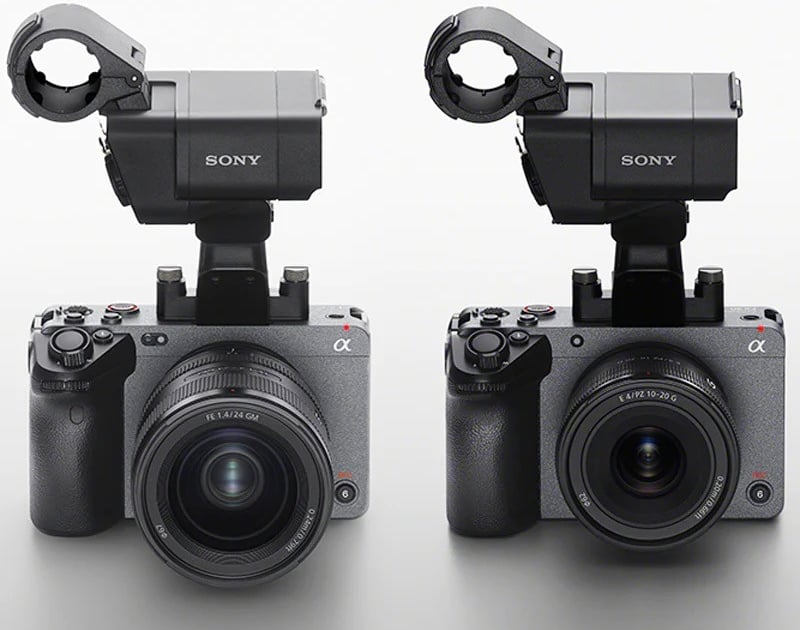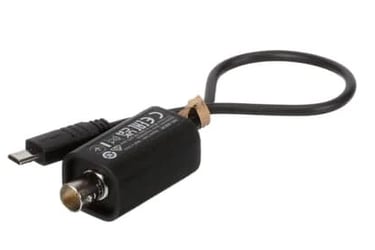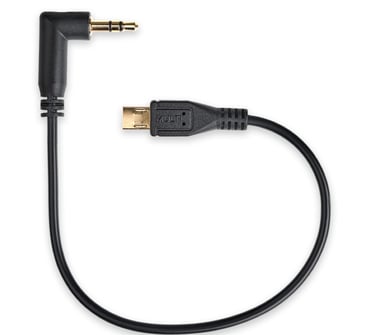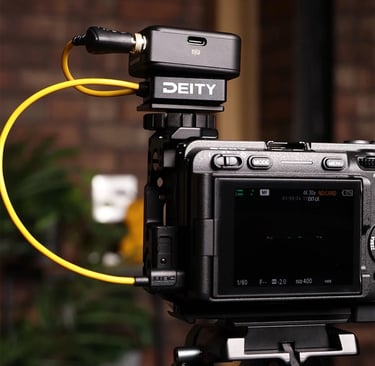
Cables, Cameras, and Clarity: Timecode Tips for Sony FX3 & FX30 Users
we'll dive into the intricate world of timecode for the Sony FX3 and FX30 cameras, a critical knowledge area for audio professionals in the film industry. We'll compare and contrast these two models, focusing on their unique features and how they impact sound recording. Additionally, we'll discuss various cable options and settings, ensuring you're equipped to handle these cameras with confidence and expertise in any shooting scenario.
TIPS
1/17/20246 min read


Sony has great cameras, but two that are infrequently used within the industry would be the Sony FX3 & Sony FX30. Although small in size compared to others, these cameras still pack a punch when it comes to video, but for us sound guys and gals we must be prepared and understand these cameras as these are a little different compared to other Sony cameras. In this article we will cover the main differences and similarities of the cameras including the physical aspects and the uses for each. In addition, we will go over settings regarding timecode including cable options and the difference when using different timecode boxes.
Firstly before going into the timecode part of this article we will discuss the main differences to get a better understanding of them, even though our jobs mainly focus on audio it is still important to grasp the knowledge of how they work. A few things that make each camera stand out from each other is that the The FX30 records footage by oversampling with 6K of data before saving it as a 4K resolution with it cropping the sensor by approximately 1.04x and the The FX3 records 4K up to 60p using the entire width of the sensor but when recording at 120p, there is a crop of 1.1x. These cameras look exactly the same from the outside, however the FX30 is a little lighter and has a better resolution on the LCD screen when compared to the FX3. Recently Sony has announced an FX3 compatible handle that includes XLR inputs for audio that its counterpart the FX30 had already previously been using. Although you might be saying to yourself “Why do I need to know this if I am in the audio department?” Sometimes just knowing the basics of the camera can help you troubleshoot in case there are no AC’s to help you out.
Now for the main topic that this article is about which is timecode for each camera and the different cables needed for each. Just by looking at these cameras you will see right away that these cameras don't have many inputs for the audio department compared to other Sony cameras, inputs such as timecode and XLR. therefore the lack of the input options, such as timecode, are limited. Normally the way that timecode is passed to the camera is via a BNC, however with the Sony FX3 & FX30 requires a different approach with a different cable. There are 3 cable options available for these cameras, the first option is to buy an adapter directly from Sony, the VMC - BNCM1. This cable can be connected to the traditional cable used in order to transfer timecode. The second option is to purchase the dedicated timecode cable made by Tentacle, the C24 Tentacle to MicroUSB. Lastly is a Deity C23 timecode cable. One of the most notable features of the Deity C23 timecode cable is that it fits easily between your Sony FX3 or FX30 camera and the timecode box using hook-n-loop Velcro. This allows for easy setup and use without any additional cables or clamps. This construction and mounting method removes cable stress from your Sony's multi-port. With any of these cables you are able to transfer timecode to both FX3 & FX30 without having issues. Some products, such as Røde, come with a cable for these cameras whenever you purchase their timecode boxes, however whichever option you choose will work, there isn't a specific way you need to do it. If you are low on funds or don't want to trouble yourself with another cable, there is another option that you can exercise with these cameras and that's by using a 3.5mm - 3.5mm cable and plugging it into the mic input of the camera. Just make sure to set your timecode boxes to MIC level otherwise the camera will distort the timecode sound and it will be difficult to sync up later. Before you go grabbing any cable from your pile you must understand that the traditional MicroUSB - 3.5mm cable will not work, you must either purchase the cable that is meant to transfer TC, buy the adapter or to use the 3.5mm - 3.5mm into the Mic input, otherwise the cameras will not jam and the post team will be very upset :(
The Sony FX3 and Sony FX30 have the same timecode settings as each other, therefore setting up both cameras will be the same. Once you have the right cables and your preferred timecode boxes, you will now need to set the camera to the right settings. This step will vary depending on the cables used, if you will be using the 3.5mm - 3.5mm cable the settings will be different versus if you use the other cables I have mentioned earlier. Let's start with the easy one, which is using the mic input, like i said earlier, before you plug in your timecode box, you must change the setting of the timecode box to mic level. Changing this setting on the timecode box depends on the product, either it be physical or digital but you can find those instructions in the manual of your product. The next step is to plug in one side of your 3.5mm - 3.5mm cable to the timecode box and the other to the mic input of the camera. Once that's done you adjust the audio level on the camera so it's not clipping, then you are ready to hand over the camera to its operator. Now, if you are using either the cable adapter or the Tentacle-produced cable there are a few more steps needed to sync the camera with timecode. If you will be using this method there is no need to change the timecode boxes to MIC level, they must stay on line level, but you do have to make sure that the frame rate of the timecode boxes matches that of the camera. These settings are similar if you were to set up a Sony FX9 with timecode, first go into the menu, then head over to the Timecode tab, then set the timecode to be free run. After that you are able to plug in your timecode box using either the adapter or the Tentacle cable. However you are not done there, after plugging in the timecode box, exit out of the menu and on the top part of LCD screen you should see timecode running with the label EXT-LNK next to it, this indicates that camera is picking up the timecode signal and is running smoothly. If you are still not seeing this make sure to troubleshoot by going through the steps again, check if you are using the right cable and check if the settings within the timecode boxes are correct, AKA checking MIC/LINE level and frame rate.
Sony cameras are very common within the industry and even in our personal lives therefore by understanding the cameras a little bit better will make our lives easier. Timecode for both the Sony FX3 & Sony FX30 can be tricky if you haven’t set it up before, however we hope that empowered with this information for any future encounter you may have with these cameras in the wild. With the links provided you are able to purchase the cables listed above.




TENTACLE TO MICRO-USB FOR SONY FX3 / FX30 TIMECODE CABLE


Lastly, we'd be remiss not to mention the functionality of Tentacle Sync Studio, a comprehensive syncing tool.. This software stands out for its ability to read and analyze various kinds of timecode, providing filmmakers with an efficient way to manage their footage. Its interface is designed for ease of use, offering a clear overview of all clips, which aids in the quick and organized sorting of video content. You can even use a combination of timecode on the audio track of an FX3 or FX30 in conjunction with proper timecode metadata. The time-saving aspect of the software is particularly beneficial for time-pressed professionals who need to transition smoothly from shooting to editing. While its primary focus is on timecode management, the software's versatility extends to broader aspects of film production, underscoring its utility in a professional filmmaking environment.
Get in touch
© 2025 Vandelay Sound Exports, Inc. • RETURN Policy • Privacy Policy • Terms and Conditions
